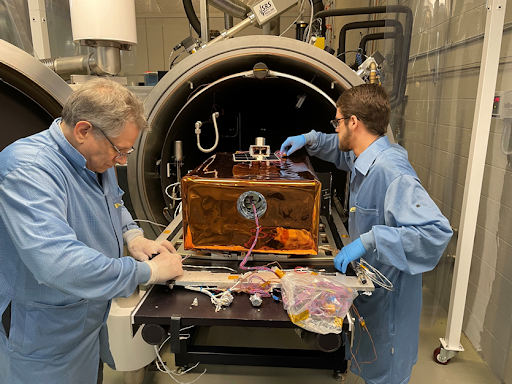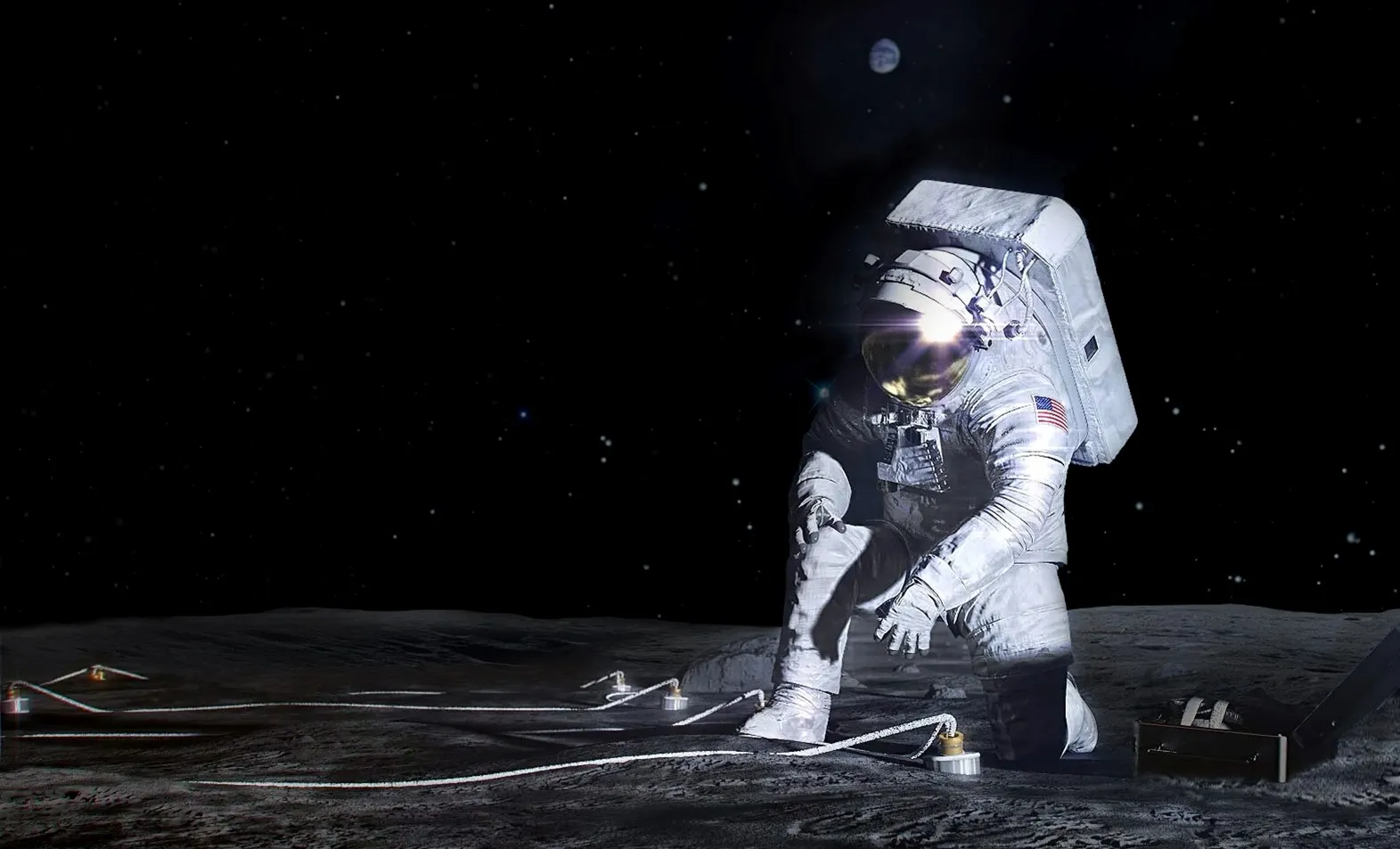The University of Maryland Baltimore County (UMBC), along with several institutional partners, has been selected to develop one of the first three lunar instruments chosen for implementation and deployment as part of NASA’s forthcoming Artemis III mission, humanity’s first return to the lunar surface in more than 50 years.
The Lunar Environment Monitoring Station (LEMS), led by planetary scientist Mehdi Benna of UMBC’s Center for Space Sciences Technology (CSST), was selected as one of the first three candidate payloads to be a part of Artemis III, NASA’s mission that will send astronauts to explore the region near the lunar South Pole. Artemis III, currently planned to launch in 2026, will be the first time humans will return to the Moon’s surface since the historic Apollo program in 1969-1972.
LEMS is a compact, autonomous seismometer designed to carry out continuous, long-term monitoring of seismic activity, namely ground motion from moonquakes, in the lunar south polar region, according to NASA’s recent announcement of the selected Artemis III instruments. During the Artemis III mission, LEMS will accompany the Lunar Effects on Agricultural Flora instrument, led by researchers at Space Lab Technologies in Boulder, Colorado, and the Lunar Dielectric Analyzer instrument, led by researchers at the University of Tokyo and supported by the Japan Aerospace Exploration Agency.
The LEMS project is the culmination of several years of collaboration between UMBC and partnering institutions, of which includes the University of Maryland, College Park (through deputy principal investigator Nicholas Schmerr) and NASA’s Goddard Space Flight Center, which will lead LEMS’ technical implementation process. The University of Arizona will supply LEMS’ two state-of-the-art seismometer sensors; Morehead State University will provide LEMS’ telecommunication system, and Washington University in St. Louis will manage the instrument’s data processing and dissemination to the larger scientific community.
Designed to withstand extreme conditions
Principal Investigator Benna, who operates out of the NASA’s Goddard Space Flight Center with the CSST, began conceptualizing with his team the idea behind the LEMS instrument in 2018 after realizing the need for technology that could withstand the Moon’s harsh conditions in order to measure lunar geophysical activity for a long duration of time.

“The lunar environment is one of the harshest environments in the solar system. It’s hard to survive [on] the Moon because it rotates very slowly around itself—daytime on the Moon lasts about 15 Earth days, and night on the Moon lasts 15 Earth days,” says Benna. “Because the Moon doesn’t have an atmosphere, the days are very hot and the nights get really cold.”
Benna’s team began developing his idea of a small, self-sustaining station that operates almost like a buoy in the ocean—what Benna calls a “lunar buoy”—that can survive on the surface through the lunar night and operate during the day for an extended amount of time. In 2018, Benna’s team received funding from NASA’s Development and Advancement of Lunar Instrumentation program for engineering development and risk reduction of the LEMS instrument, which allowed it to reach the required NASA flight readiness level.
“The Apollo 11 of our generation”
LEMS, which is of the size of a standard carry-on airplane suitcase, is intended to operate on the lunar surface from three months up to two years following its deployment. The station’s battery is designed to be charged by its solar panels during the day. The stored power is used to keep the station operational at night. The LEMS instrument would then autonomously beam its data to one of NASA’s Deep Space Network ground stations once a month via its own communication antennas and radio system.
With the data retrieved from LEMS’ two distinct lunar-night-surviving seismometers, scientists will be able to characterize the structure of the local crust and mantle.
“Artemis III is the Apollo 11 of our generation—that’s significant. Landing astronauts on the Moon doesn’t get any easier 50 years later. Being a part of this adventure is extremely exciting,” shares Benna.
For more information on the Lunar Environment Monitoring Station (LEMS) science and technology, please contact: The University of Maryland, Baltimore County- Adriana Fraser; NASA’s Goddard Space Flight Center- Molly Wasser, Nancy Jones; The University of Arizona- Mikayla Kelley; Morehead State University- April Hobbs Nutter, Rick L. Hesterberg; Washington University in St. Louis- Paul Byrne; NASA Headquarters- Erin Morton.
Tags: CSST, NASA Goddard Space Flight Center, rca-1, Research

